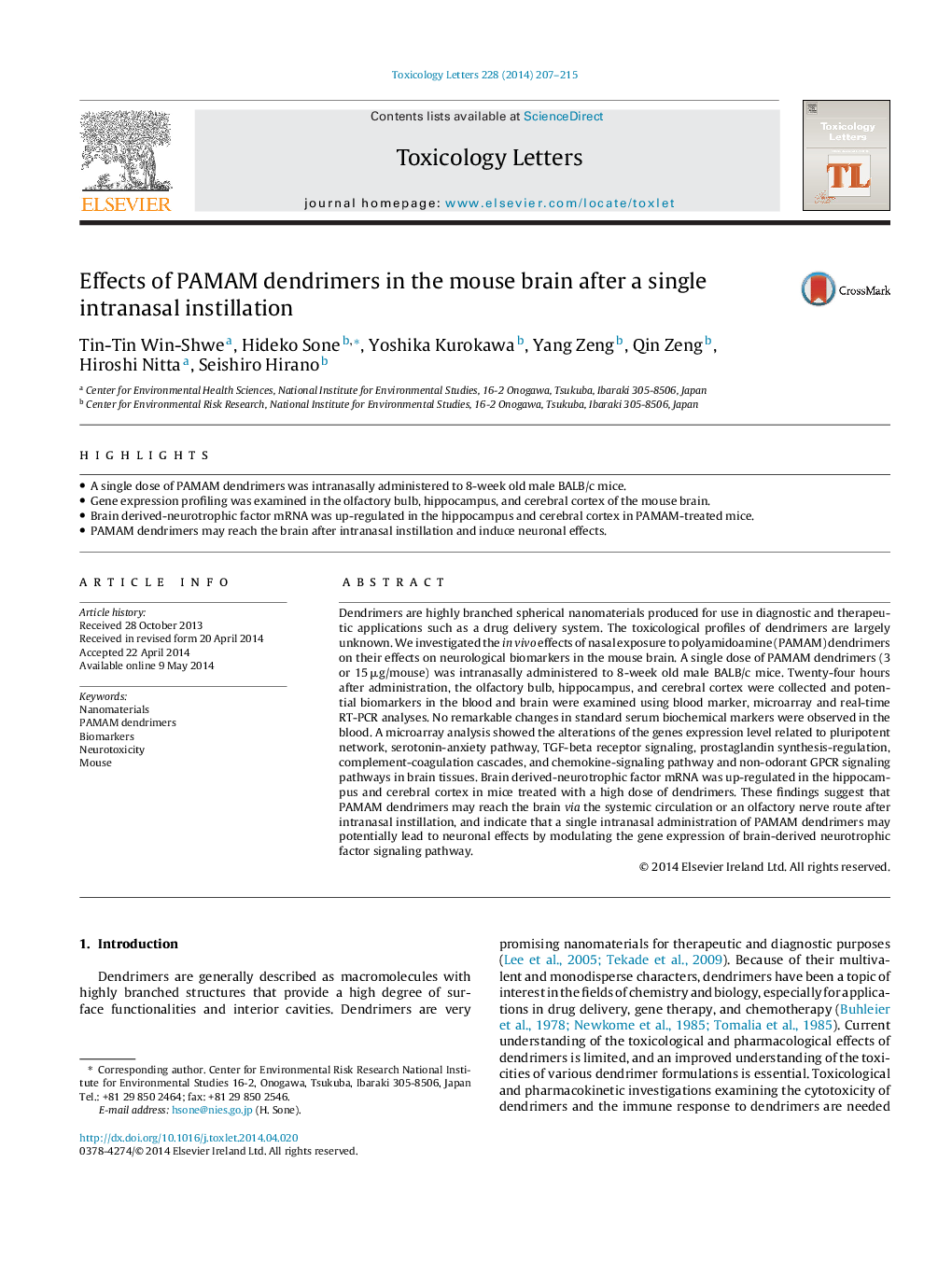| Article ID | Journal | Published Year | Pages | File Type |
|---|---|---|---|---|
| 2598943 | Toxicology Letters | 2014 | 9 Pages |
•A single dose of PAMAM dendrimers was intranasally administered to 8-week old male BALB/c mice.•Gene expression profiling was examined in the olfactory bulb, hippocampus, and cerebral cortex of the mouse brain.•Brain derived-neurotrophic factor mRNA was up-regulated in the hippocampus and cerebral cortex in PAMAM-treated mice.•PAMAM dendrimers may reach the brain after intranasal instillation and induce neuronal effects.
Dendrimers are highly branched spherical nanomaterials produced for use in diagnostic and therapeutic applications such as a drug delivery system. The toxicological profiles of dendrimers are largely unknown. We investigated the in vivo effects of nasal exposure to polyamidoamine (PAMAM) dendrimers on their effects on neurological biomarkers in the mouse brain. A single dose of PAMAM dendrimers (3 or 15 μg/mouse) was intranasally administered to 8-week old male BALB/c mice. Twenty-four hours after administration, the olfactory bulb, hippocampus, and cerebral cortex were collected and potential biomarkers in the blood and brain were examined using blood marker, microarray and real-time RT-PCR analyses. No remarkable changes in standard serum biochemical markers were observed in the blood. A microarray analysis showed the alterations of the genes expression level related to pluripotent network, serotonin-anxiety pathway, TGF-beta receptor signaling, prostaglandin synthesis-regulation, complement-coagulation cascades, and chemokine-signaling pathway and non-odorant GPCR signaling pathways in brain tissues. Brain derived-neurotrophic factor mRNA was up-regulated in the hippocampus and cerebral cortex in mice treated with a high dose of dendrimers. These findings suggest that PAMAM dendrimers may reach the brain via the systemic circulation or an olfactory nerve route after intranasal instillation, and indicate that a single intranasal administration of PAMAM dendrimers may potentially lead to neuronal effects by modulating the gene expression of brain-derived neurotrophic factor signaling pathway.
